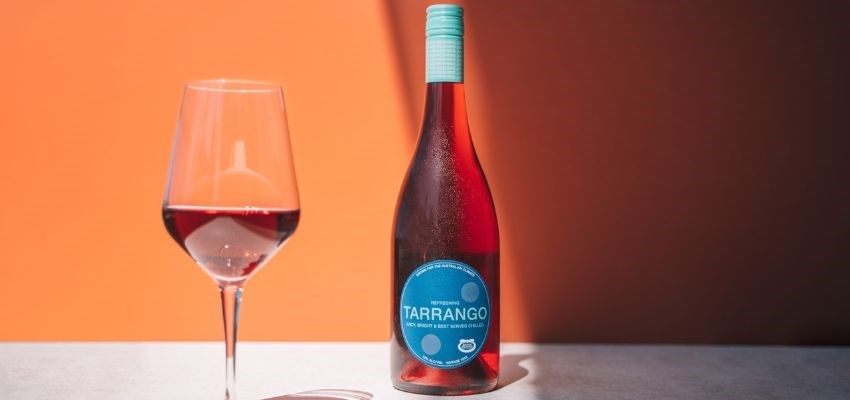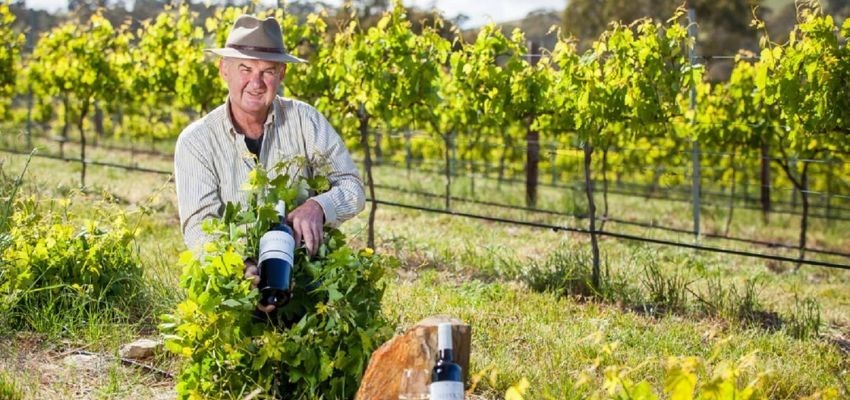I’m immersed in the latest food and wine movies while tasting my way through the business class wine-list on a Qantas flight from Johannesburg to Sydney. Watching “Next in Wine: Survival and Succession”, the story of the fourth-generation Brown Brothers (founded in 1889) wine dynasty in Victoria, Australia; I’m enjoying a glass of Xanadu Chardonnay from Margaret River. This is the life.
How often do I find the time to taste wine, watch wine and write wine at the same time? You’ve got all the time in the world on a long-haul flight. The fascinating wine documentary tells the story of Tarrango, a high-yield, late-ripening red grape specifically bred for Australian conditions in hot irrigated inland regions like King Valley and Milawa, the home of Brown Brothers. Made in a light, fresh Beaujolais style, this cross of Touriga Nacional and Sultana was first cultivated in the 1960s.
The Brown Brothers – headed by eight women today who quip they should call it the Brown Sisters like an all-girl soul band – is a household name in Australian wine. Renowned for pioneering old, alternate varieties like Albarino, Barbera, Cienna (a 1972 cross of Cabernet Sauvignon and Spanish Sumoll), Durif, Fiano, Prosecco (the white grape used to make Italian sparkling wine), Montepulciano and Mondeuse (Savoie, Italy), the cellar is at the forefront of wine marketing strategies. Made since the early 1980s, the cellar reinvented Tarrango in 2022 in a move to capture shelf space and younger consumers in multiple retailers – competing in the fridge with “drink me now chilled” pre-mixed RTDs, spritzers, rose, sparkling wine and lightly chilled reds.

Brown Brothers Tarrango.
I’m fascinated by alternate varieties – like a twitcher (birdwatcher), I keep my own checklist of fifty “strange birds” (to use an Australian wine term) I’ve spotted and tasted over the years. I’m frustrated Tarrango is not on the meticulously curated Qantas business class wine-list – to complement the new Foxtel documentary on the in-flight movie list. I’ll have to wait until we land to sample the lively, fragrant, vibrant cherry and strawberry potpourri of flavours promised by fourth-generation winemaker Kathy Brown, who says, “With Tarrango we’re looking to redefine lightly chilled red wine as the drink of summer – and hoping to create a whole new wine category in Australia”.
After rigorous group tastings of three sample styles of Tarrango, Dan Murphy, the Australian liquor retail giant, bought 15 000 bottles of the new-style 2022 Tarrango from Brown Brothers (retailing at A$20). There may be a promising future for the new grape variety named after a small Outback town in Victoria. The winemaker explains that one of the secrets behind the new style of wine is carbonic maceration of whole-bunch berries using a wild ferment to lift the upfront red berry fruit in an unwooded fruity light red wine (12% abv) with a racy acidity, spicy quality and dry finish.
Sticking to the alternate wine theme, I enjoy a refreshing in-flight glass of De Bortoli MRV Marsanne, Roussanne and Viognier, one of the wines from another renowned family cellar in Victoria, followed by the fine taste of Yering Station Pinot Noir (also from the Yarra Valley). After all, I’ve got nowhere to go for the next twelve hours – and can explore the best of Australian food and wine from the comfort of my bed-seat. The in-flight menu created by Australian master chef Neil Perry calls for great wines. Business class wine lists fascinate me. Between the late 1990s and 2019 I wrote all the tasting notes for the business class wine-lists of BA Comair and SAA which showcased fine Cape wines and cellars.
By now, I’m watching “The Menu” (2022), a savage movie satire on the pretensions of fine dining and food critics. With two Oscar 2023 nominations for best comedy and best original screenplay, it is a must-see film for foodies, starring the ebullient Ralph Fiennes as a cynical celebrity chef who declares “My entire life I’ve been trying to satisfy people who can’t be satisfied”. The sommelier is one of the stars of the film, pouring “hyper-decanted wines using an immersion blender to awaken the wine from its slumber” and Pinot Noir “with a faint sense of longing and regret!” paired to the memory course. The Montrachet from a single row of vines is on the screen and not the wine-list so I enjoy it with a glass of Kilikanoon Blocks Road Cabernet Sauvignon, a cellar I visited in Clare Valley.
Within 48 hours of landing in Sydney, I was up in the tropical north of Queensland, on a media trip to explore the Great Barrier Reef and ancient Dain Tree Rainforest, renowned Unesco World Heritage sites. I worked off the long flight floating down the Mossman river Back Country Bliss, walking in the rainforest with aboriginal guides from Walk About Cultural Adventures, snorkelling on the Great Barrier Reef with marine biologists on Passions of Paradise, and low-flying in a chopper over rainforest and reef spotting crocs, turtles and manta-rays from the air (Nautilus Aviation).
By night, we enjoyed fine food created by SA chef Mark Godfeer in the heart of the rainforest at Silky Oaks Lodge of Luxury Lodges of Australia. At a wine tasting on the terrace on the banks of the Mossman creek, I added to my check-list of alternate varieties, chalking up Jim Barry’s Clare Valley Assyrtiko, the first producer of the Greek grape in Australia (closer to home I tasted Jordan’s own Assyrtiko at CapeWine 2022). Jim Barry planted the first 658 Assyrtiko vines in South Australia in 2011 after discovering the variety when visiting Santorini in 2006, importing 12 cuttings from a single vine and grafting buds from the mother vine onto 30 Riesling vines high in Clare Valley. He praises the fresh, crisp, acidity, low Ph and dry texture of Assyrtiko – a climate change variety.

Peter Barry with one of the woven-basket Assyrtiko vines (Photo: Newcastle Herald)
While wining and dining around the fine restaurants of Cairns and Port Douglas, I also really enjoyed pairing Seppeltsfield (founded 1851) Barossa Vermentino with fresh shellfish and linefish at Ochre – a refreshing steely, salty, mineral and lemony wine reminiscent of its maritime roots in Corsica, Sardinia and Liguria. (Ayama and Morgenster make first-rate expressions of this aromatic Italian grape in the Cape.) Staying on the Italian theme at Zinc restaurant and grill in Port Douglas, we quaffed the hipster Motley Cru Pinot Grigio from King Valley. Back at Silky Oaks, we also tasted a fragrant Yalumba Viognier, sublime Brokenwood Semillon and seriously classy Leeuwin Chardonnay.
I came across one of the finest wine-lists in Queensland at CC’s Bar and Grill by Crystalbrook, a plush grill with a walk-in cellar of rare and contemporary vintages from around the world. The cutting-edge menu calculates what they call climate calories – based on five categories listed with each dish on the menu. These are that all ingredients should be locally sourced from within a geographical radius of three hours (most meat comes from Crystalbrook’s own cattle station north of Cairns); reducing waste by pickling and preserving with zero-waste of vegetables; using ethical meats and sustainable seafood by using the whole beast; using only eco-friendly produce supplied in 100% recycling or bio-packaging; and working with indigenous communities to use culturally considered native ingredients. It won best national hotel/resort restaurant in 2022 and Queensland restaurant of the year in 2022.
I was on a learning curve in the tropics – where local is lekker (Crystalbrook Collection). Satiated, I fell asleep thinking of the imaginary chef in the Menu movie who admonishes his customers with the conundrum, “Taste don’t eat. You eat less than you desire and more than you deserve. Think of yourselves as ingredients in a figurative degustation.”
See Cairns & Great Barrier Reef and Tourism & Events Queenstown